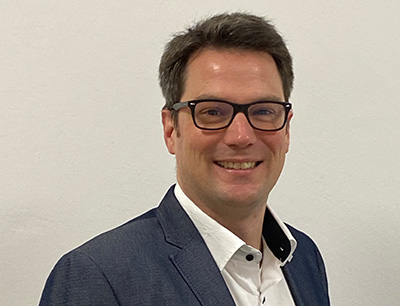
More and more consumers are considering the sustainability of their actions. But they are not alone. The chemical producer Kuraray as a company also asks how environmentally friendly their supply chain is and how much scope there is for further improvement. Therefore, the company recently arranged for a Life Cycle Assessment (LCA) to be carried out so that they can evaluate the carbon footprint of their products. In an interview, Dr. Jörg Schappel, Director Safety, Health & Sustainability at Kuraray Europe, gives an insight into the background to the LCA and the extent to which Kuraray takes sustainability on board. He also takes a look at the future of a sustainable chemical industry.
We have been a member of the Renewable Carbon Initiative since the beginning of this year. This initiative is endeavouring to find different raw material sources and alternatives to oil. In principle, there are three options: bio-based alternatives, raw material streams obtained directly from CO2 and hydrogen and thirdly, and this will probably be the biggest source in the future, recycling streams. The members of the Renewable Carbon Initiative include many chemical companies, but there are also some companies from textile industry. Lego is also planning to join. Because this initiative is so broadly based and not confined to a single sector of industry, it also gets itself heard in Brussels.
Dr. Schappel: There are a number of studies on what raw material sources for the chemical industry could look like. For example, bio-based materials will probably make up about 20 percent of the total. About the same proportion will come from CO2 and hydrogen. The lion’s share – 60 percent – will be obtained from mechanical or chemical recycling streams. In mechanical processing, the - cleaned - material is shredded, melted and returned to the production cycle. That is something we are familiar with from PET bottles. In chemical recycling, by contrast, the materials are separated into their original monomer components. For example, using pyrolysis, where high temperatures convert the plastics into oil. A steam cracker then produces monomers from the oil. Another chemical recycling process is plasma gasification. Here, a plasma beam separates the material into its original components.
Dr. Schappel: The real work is only just starting. The LCA established the present situation. The Kuraray Group is also taking action in the energy sector: we are currently examining the purchase of green electricity. Our aim is not to use allowances to offset emissions but to use green electricity from the start, for example, by buying into a wind farm.
The steam required for the production of Kuraray products is also being examined in more detail. At present, it is produced from gas and finding alternatives is challenging. However, it would be possible produce steam from electricity - or to use green feedstocks such as biogas as a substitute for oil. Another option is synthetic methane obtained from CO2 and hydrogen. That is an alternative that has to be considered, even though it is still in the development phase.
Naturally, sustainable materials are more expensive than oil-based ones – so we need to take a close look at whether the prices are justified. After all, we have to pass the higher costs on to our customers. However, demand for sustainable alternatives is still low. For most customers at present, it is the price alone that counts. However, that will change in the future because customers also have to improve their sustainability.
Dr. Schappel: All of them - for example Covestro and BASF - are looking for alternative raw materials. Many customers in the chemical industry have already defined Scope 3 targets for 2030 so we need to take action by 2030 as well. As a result, everyone needs to place their raw materials and energy generation on a sustainable basis. At the moment, they are mainly using bio-based or partly bio-based materials.
Dr. Schappel: Another big issue especially for Kuraray is carbon capture. In our activated carbon activities, where activated carbon is produced from hard coal, CO2 emissions are very high. Here, we are examining which technologies can be used to capture CO2 from exhaust gases and what could be done with it. The first possibility would be to store the CO2 permanently in the earth. The second would be to supply it to a user that could feed it back into a production cycle.
In principle, the sector is looking into many different aspects. However, many are still at the development stage and the processes take a long time. Younger colleagues often find this difficult to understand – and I would also like some things to move faster. However, much is still at the research stage or just being piloted and we are dependent on technologies that still have to be developed. That takes time. But such endeavours will no doubt gain pace from 2030 and be scaled up for industrial use.
Dr. Schappel, thank you for a very informative interview!